Fall is officially upon us, and as temps cool down, submissions tend to slow. We’re seeing a lot of insects ramping up for the colder weather; many are bulking up for a long hibernation or entering their dormant stages. We’ll likely only have a few more weeks before insect activity comes to a halt, so get em’ in while you can!
Header Photo: Grass-veneer Moth (Thaumatopsis sp.) Brenna Shea, September 20th, 2023. Missoula, MT.
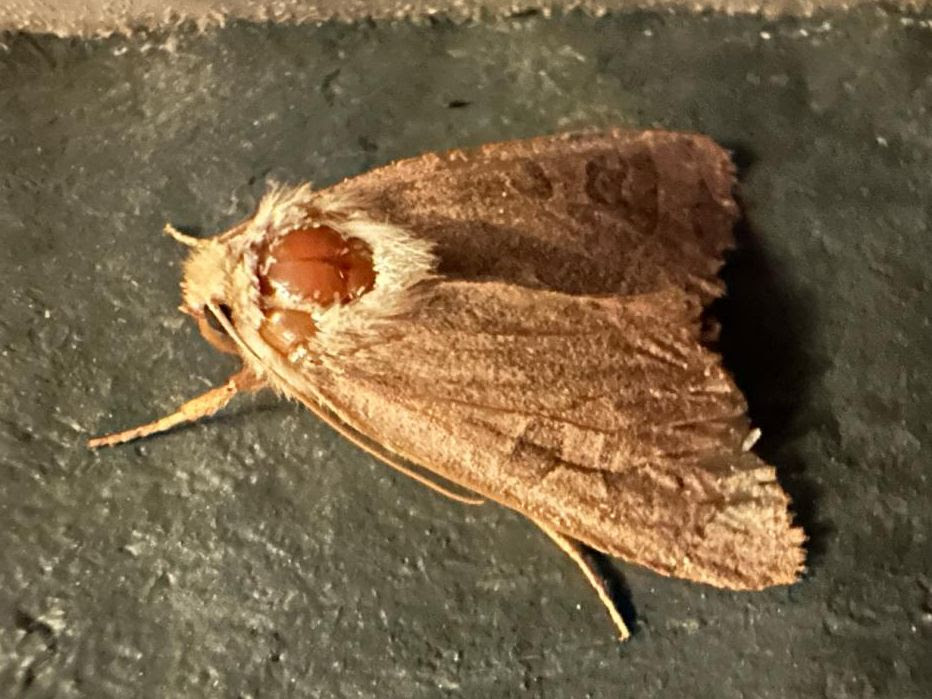
Dart Moth
Mesogona sp.
Cutworm and dart moths from the subfamily Noctuinae are notoriously difficult to differentiate from each other. We suspect this individual belongs to the genus Mesogona; there are only three species in this genus North of Mexico, all living in the western half of North America. Many moths in the family Noctuinae can only be identified via dissection or DNA analysis.
Rose Marchak, September 13th, 2023. Missoula, MT.
Ichenumonid wasp
Gelis sp.
At first glance, you might assume we mislabeled this ant-like insect. But you are, indeed, looking at a wingless wasp – not an ant. Wasps in the genus Gelis are often wingless, giving them the appearance of ants. They are common parasites of butterflies and moths, but will prey on flies and wood-boring beetles as well.
Glenn Marangelo, September 23rd, 2023. Missoula, MT.
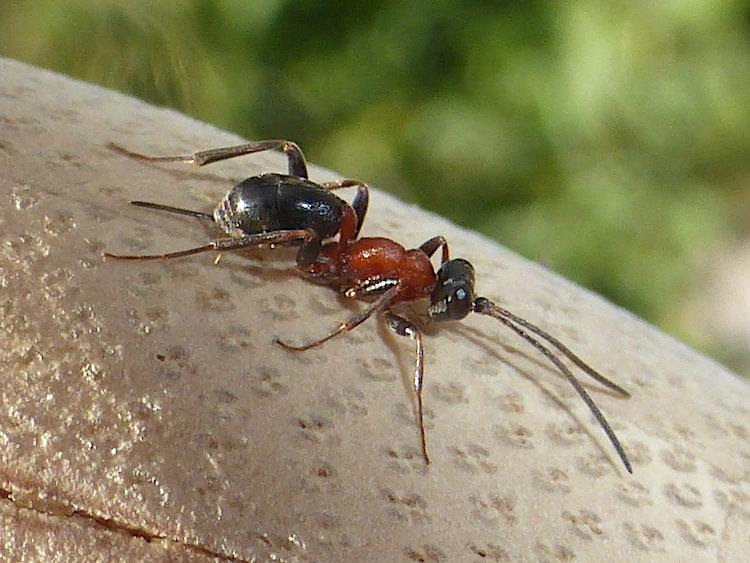
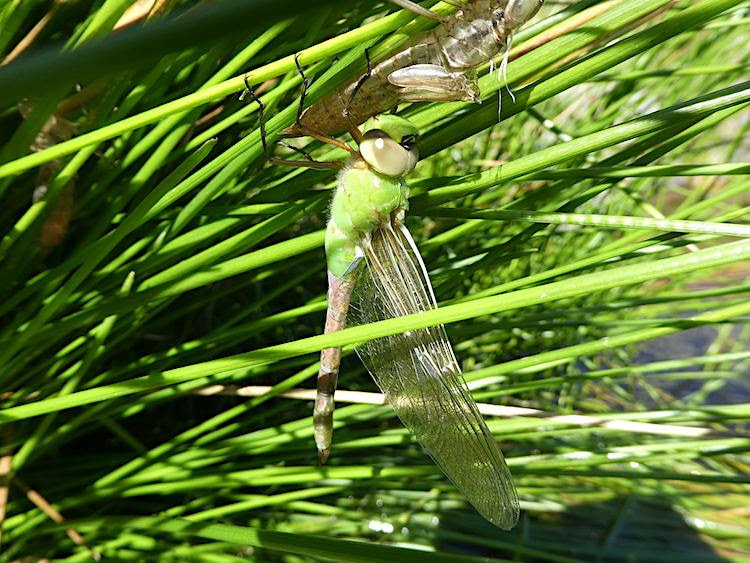
Common Green Darner
Anax junius
The common green darner is one of the largest species of dragonflies, with a complex life history that is not well understood due to their migratory behavior. This individual recently emerged and will likely make the trek south in the coming months, where they will spend the winter in Texas or Mexico.
Glenn Marangelo, September 16th, 2023. Rock Creek Confluence, Clinton, MT.
Prominent Moth Caterpillar
Datana sp.
We believe this caterpillar belongs to the Datana genus, of which there are only a few species in our area. However, this caterpillar most closely resembles the yellow-necked caterpillar moth, Datana ministra, whose range barely extends into western Montana. Just another example of the underrepresentation of moths and the need for further research on their ranges and life histories. As an adult, species in this genus look like a dead, rolled-up leaf; an excellent form of camouflage to protect them from becoming lunch.
Klara Briknarova, September 9th, 2023. Pattee Canyon, Missoula, MT.
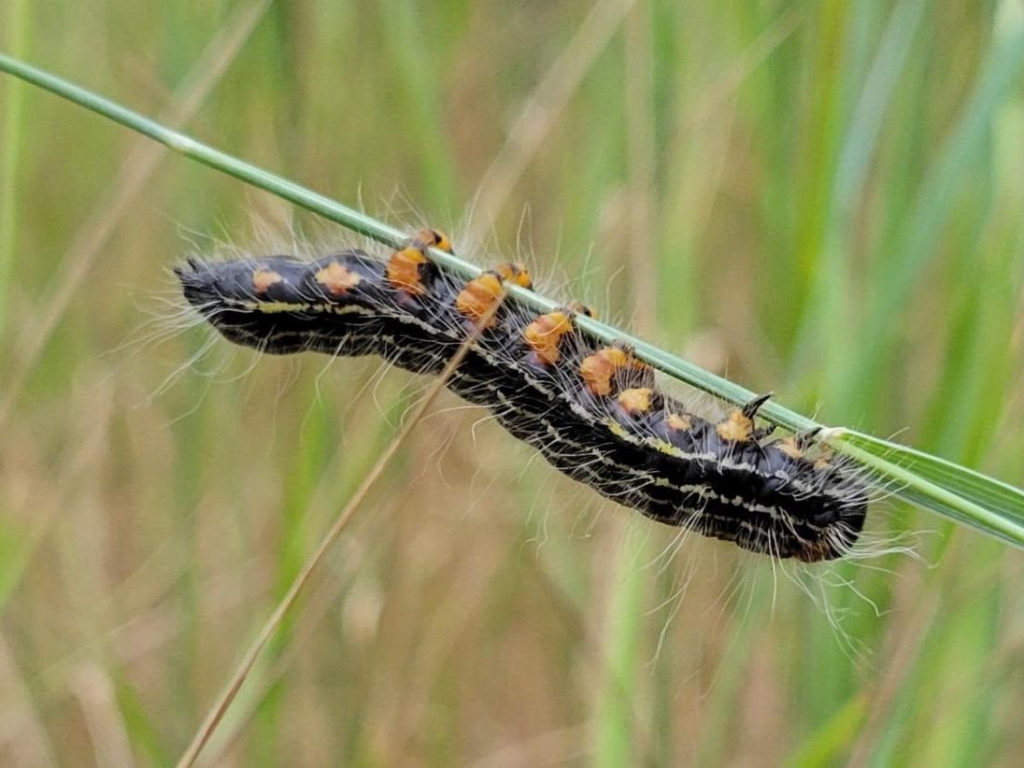
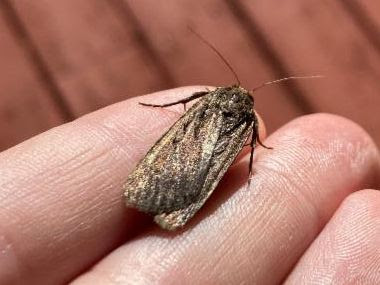
Miranda Moth
Proxenus miranda
The Miranda moth, also known as the glistening rustic for its glossy wings, is a widespread moth found coast-to-coast in North America. Adult moths take wing from May to October, with two generations flying each year. Their larvae are small, inconspicuous caterpillars that feed on cantaloupe, dandelion, sugar beet, strawberry, and sweet potato leaves. The name Miranda comes from the daughter of the magician Prospero in Shakespeare’s play The Tempest.
Brenna Shea, September 23rd, 2023. Evaro, MT.
Ichenumonid wasp
Tribe Ichneumonini
There are well over 3,300 species of Ichneumon wasps north of Mexico, making their identification difficult. Females wield a long, tail-like appendage. Although it looks threatening and reminiscent of a stinger, it is an organ for laying eggs. Most ichneumon larvae are parasites of moths and butterflies or sawfly larvae. Mothers lay their eggs on or in the insect host, and the larvae develop and grow at the expense of it. Ultimately, the larvae kill the host.
Glenn Marangelo, September 25th, 2023. Pattee Canyon, Missoula, MT.
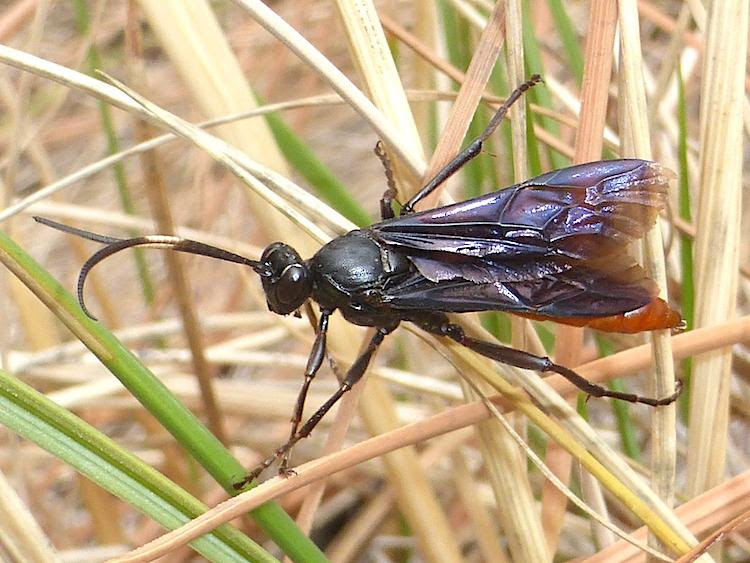
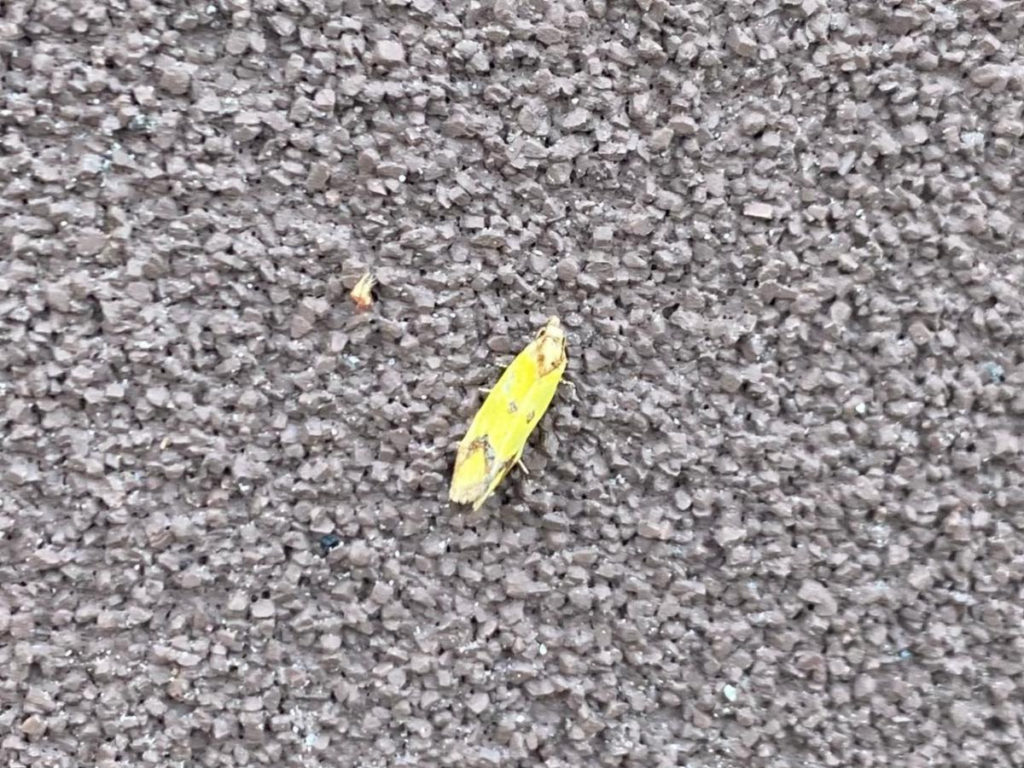
Knapweed Root Moth
Agapeta zoegana
These distinct, bright yellow moths are native to Eurasia but were introduced to the US in 1984 as a form of biocontrol in the fight against knapweed. They are found in most northwestern states where knapweed has established. Adults live for up to two weeks, with females laying up to 80 eggs on knapweed plants. The emerging larvae will bore into the roots of the plant, causing moderate damage. They are not known to case damage to other plants.
Brenna Shea, September 7th, 2023. Missoula, MT.
Dart Moth
Subtribe Agrotina
Like the aforementioned dart moth in the genus Mesogena, this moth likely cannot be identified further without dissection or DNA analysis. There is little information on this group of moths, with an unknown number of species across the globe. Cutworm and dart moths are diverse, with well over 400 species in North America alone.
Rose Marchak, September 13th, 2023. Missoula, MT.


Cabbage White
Pieris rapae
We’ve featured the cabbage white in What’s Buzzin’ earlier this summer, but not quite like this. This is a cabbage white in its pupal phase, the stage in which it overwinters. This individual decided to take their winter nap outside the new butterfly house, so you can be sure it’ll be under a watchful eye for the next few months.
Brenna Shea, September 27th, 2023. Missoula, MT.